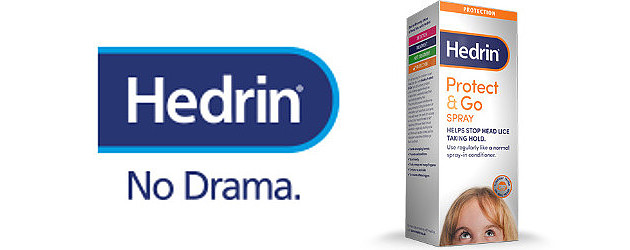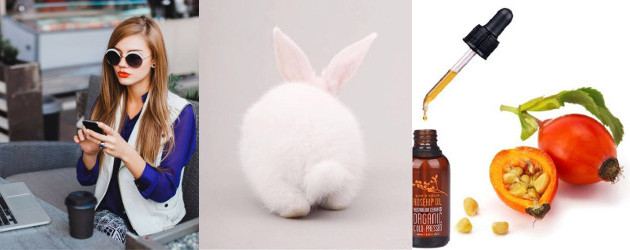Five reasons your child might get lice!
Head lice Hotspots
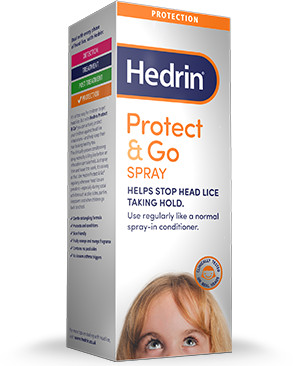
FACEBOOK | YOUTUBE
Most children will experience head lice at some point when growing up, with children aged between four and 11 being most susceptible1. Hedrin estimates that between 10-20% of children will be suffering from head lice at any one time. Despite it being common, lice can be a concern for parents, with a survey by Hedrin revealing that a third of parents feel stressed about finding lice and almost half fear judgement from others if their child has lice2.
Whilst it is widely believed that head lice can jump from on head to another, in reality they can only be transferred through head-to-head contact. In order to help you prepare for a potential outbreak, here are some of the hotspots where children make head-to-head contact and may get head lice:
School
Close contact can occur when children literally get their heads together over group project work at school. In addition most primary schools have two to three playtimes a day where children might be inseparable from their best friends, bumping into one another, getting up close and chatting in the playground; all scenarios which can help head lice spread. With that in mind, schools and parents can download or request a useful pack to help manage an outbreak. The pack includes posters for schools, head lice alert cards and a letter to send to parents, as well as a parent’s guide and a family planner.
Sleepovers
Sleepovers often involve late nights, midnight feasts, getting cosy for the latest film or crowding together over the trendiest gadget. All these activities involve several children in close proximity which generates a lot of close head-to-head contact, making it the prime opportunity for lice to spread. Therefore, when you send your child on their next sleepover, try protecting from lice with a clinically proven product such as Hedrin Protect & Go. If you haven’t had a chance to take preventative measures then it is a good idea to check their hair for any sign of lice when they return bleary eyed the next day. In general, it’s good to remember “once a week, take a peek”.
Selfies
The selfie culture is another cause for concern when it comes to the spreading of lice. The tendency to snap away to get that perfect shot leaves plenty of time for lice to transfer between heads. As more and more friends gather to get in the frame, the lice can make the most of their opportunity and sure enough, the letter home to parents is as good as on its way.
Siblings
Besides school friends, children often spend lots of close contact with their siblings, so whether they are sitting around the television, or engaging in a bit of rough and tumble play, they have a lot of direct contact which is an ideal opportunity for lice to spread. If you do find a child has head lice, make sure you treat with a clinically proven product such as Hedrin Once which takes just 15 minutes to work and only requires one treatment. It is also important to remember that you only need to treat the hair if you find live lice, it is not necessary to treat the whole family ‘just in case’ but you should check everyone – including Mum and Dad.
Storytime
While it is less common for adults to get head lice, as they are less likely to make head-to-head contact with others, it is still possible, particularly for parents and grandparents. Activities such as reading your child a bed time story can sometimes be enough to catch the little critters. As you read a favourite story (possibly for the seventh time that week) and as your child clambers over to get a better look at the illustrations, it creates the perfect opportunity for lice to crawl from your child’s head to your own or even the other way around.
Be wary of the situations and check your child’s hair regularly, however if the inevitable does happen, use a quality product to rid of the infestation quickly and make sure that you check everyone else in the family.
Protect against lice with Hedrin Protect & Go
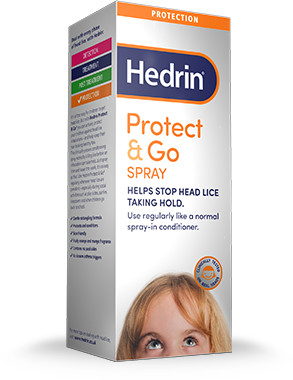
Hedrin Protect & Go is a fuss-free spray which, when applied twice-a-week, protects children from a louse infestation by breaking their life cycle and killing lice before an infestation can become established.
The Orange & Mango scented conditioning spray is also ideal for times when the risk of infection increases, such as the beginning of a new school term, at children’s parties and following an outbreak letter from the school.
The protection spray contains an organic compound called 1,2-octanediol (Activdiol®) which disrupts the life cycle of head lice preventing their spread. It is easy to apply and dries naturally leaving the hair looking healthy and conditioned.
Christine Brown, school nurse consultant and head lice specialist, said: “Head lice infestations can be hugely frustrating for parents and children alike. An effective preventative solution that offers greater control and reassurance is not only a real breakthrough, but could drastically reduce the number of infections. The spray is also kind to children’s hair and should be used as part of the regular cleaning regime, much the same as cleaning teeth or using a shampoo.”
Hedrin Protect & Go Spray is available in 120ml £4.29, 200ml £6.29 and 250ml £7.29. Available from pharmacies and leading retailers including Boots. It is skin friendly and contains no known asthma triggers.
Treat lice with Hedrin Once
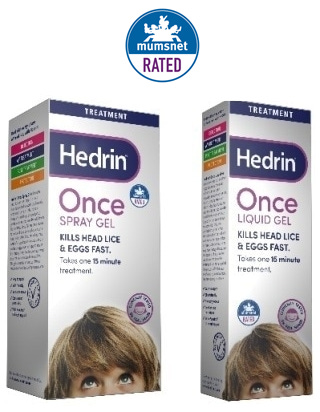
Hedrin Once is clinically proven to kill lice and eggs with just one 15 minute treatment4,5. A thicker gel formulation which contains Penetrol®, to aid penetration into the louse egg, Hedrin Once has been awarded the esteemed ‘Stamp of Approval’ from Mumsnet after 250 parents gave it the all-round thumbs up.
Christine Brown, community nurse and head lice specialist, said: “It is important to deal with head lice promptly to prevent the infestation from spreading further. By only requiring a single 15 minute application, Hedrin Once Liquid Gel significantly shortens the process for treating head lice, making it easier for parents, and increasing the chances of successful treatment.”
Available in spray gel (60ml £7.14, 100ml £11.73) and liquid gel (100ml £10.20, 250ml £17.86). Available from leading retailers including Boots.
1 Headlice and nits. 2016. NHS choice. www.nhs.uk/conditions/Head-lice/Pages/Introduction.aspx
2 One Poll survey of 2,500 parents (4-15 years old), March 2016
3 Head Lice in Schools. 2014. National Teachers Union. {Available at: www.teachers.org.uk/sites/default/files2014/head-lice-in-schools.doc} Last Accessed December 2016
4 Burgess IF, Burgess NA. Dimeticone 4% liquid gel found to kill all lice and eggs with a single 15 minute application. BMC Research Notes 2011; 4: 15.
5 Burgess IF1, Brunton ER, Burgess NA. Single application of 4% dimeticone liquid gel versus two applications of 1% permethrin creme rinse for treatment of head louse infestation: a randomised controlled trial. BMC Dermatol. 2013 Apr 1;13:5.
